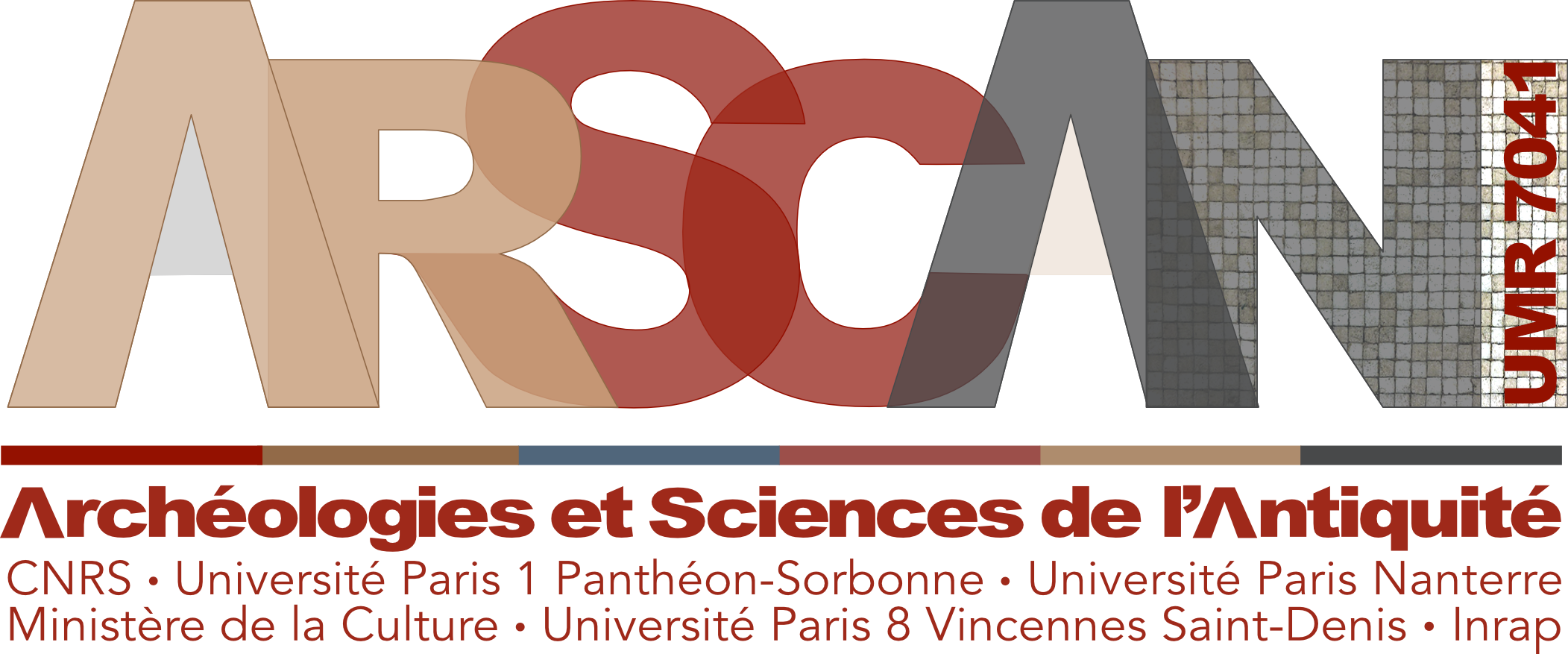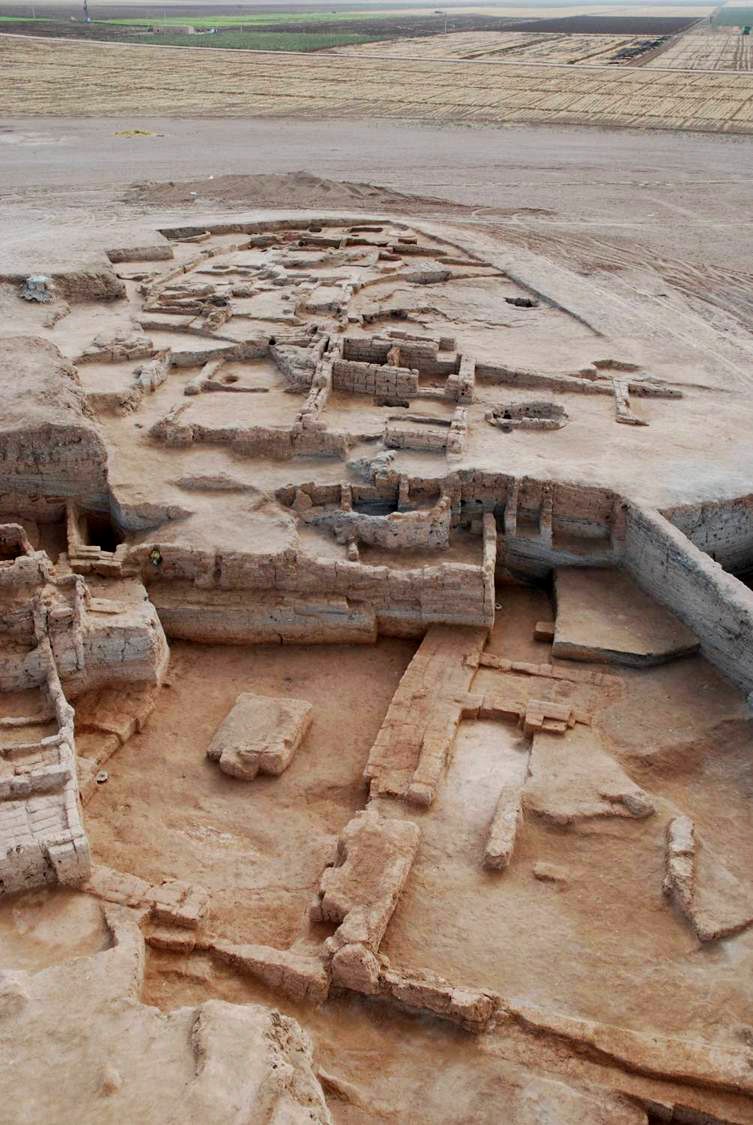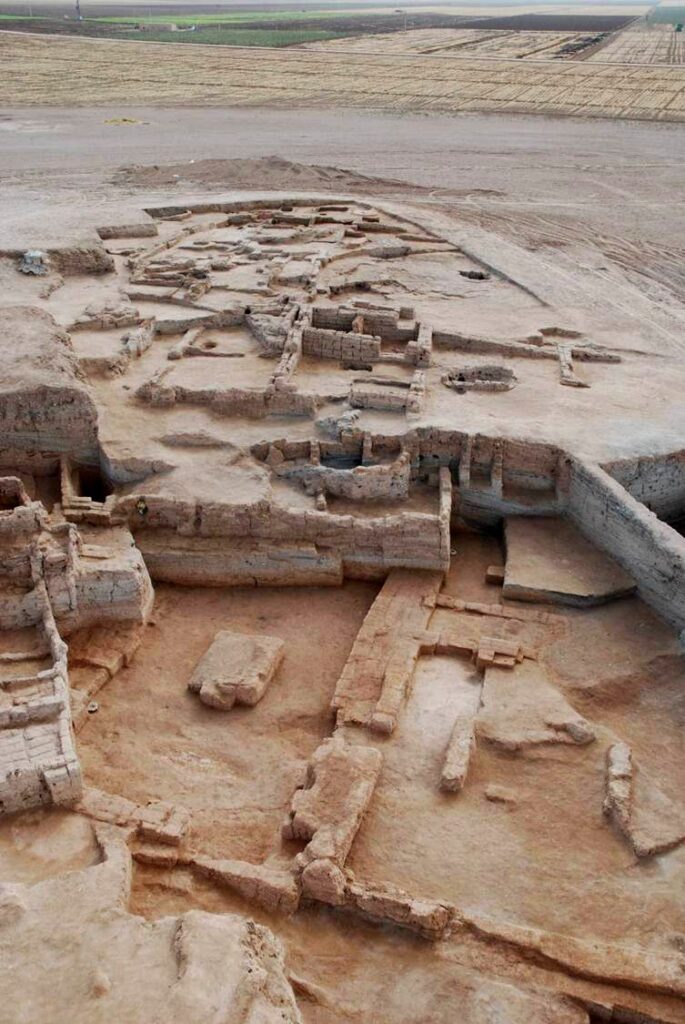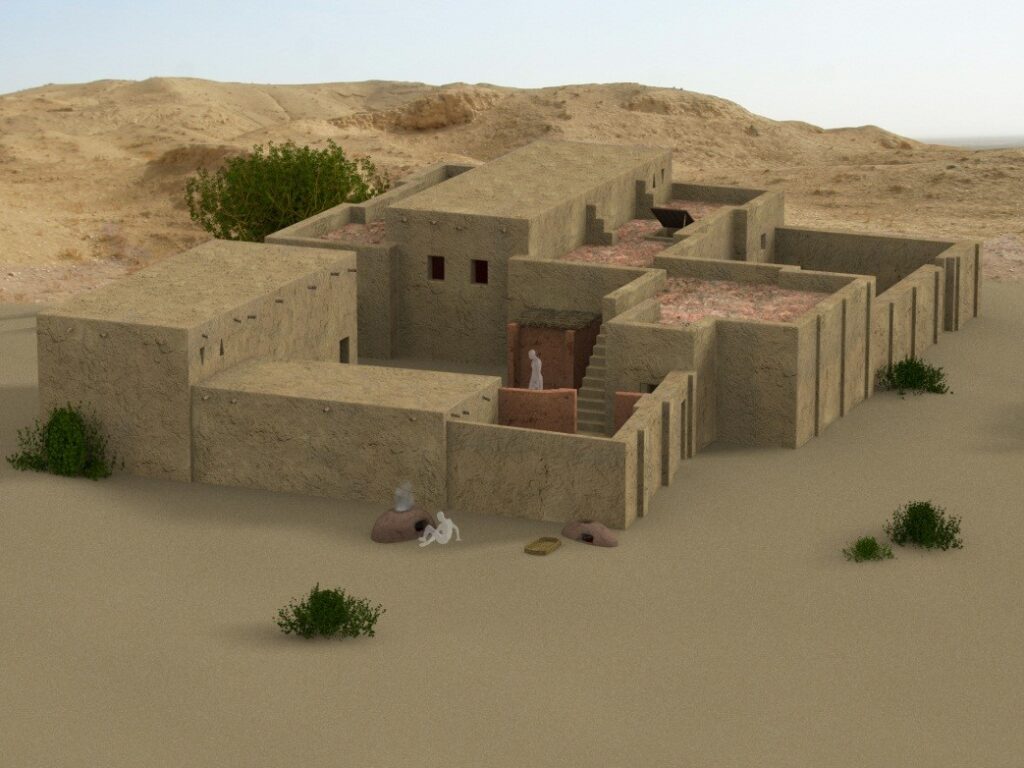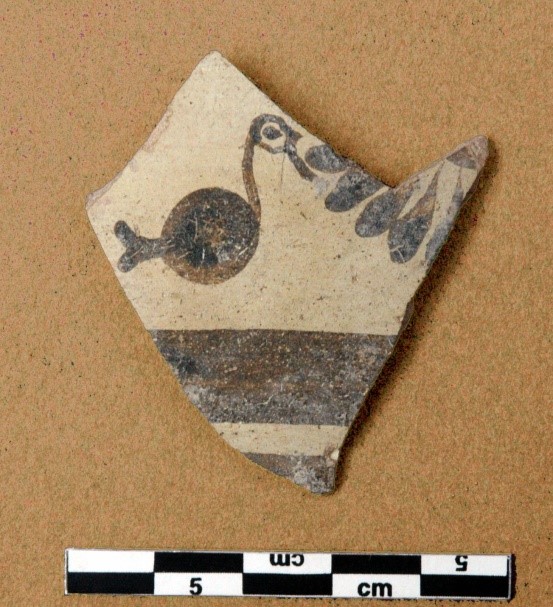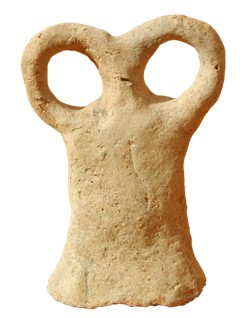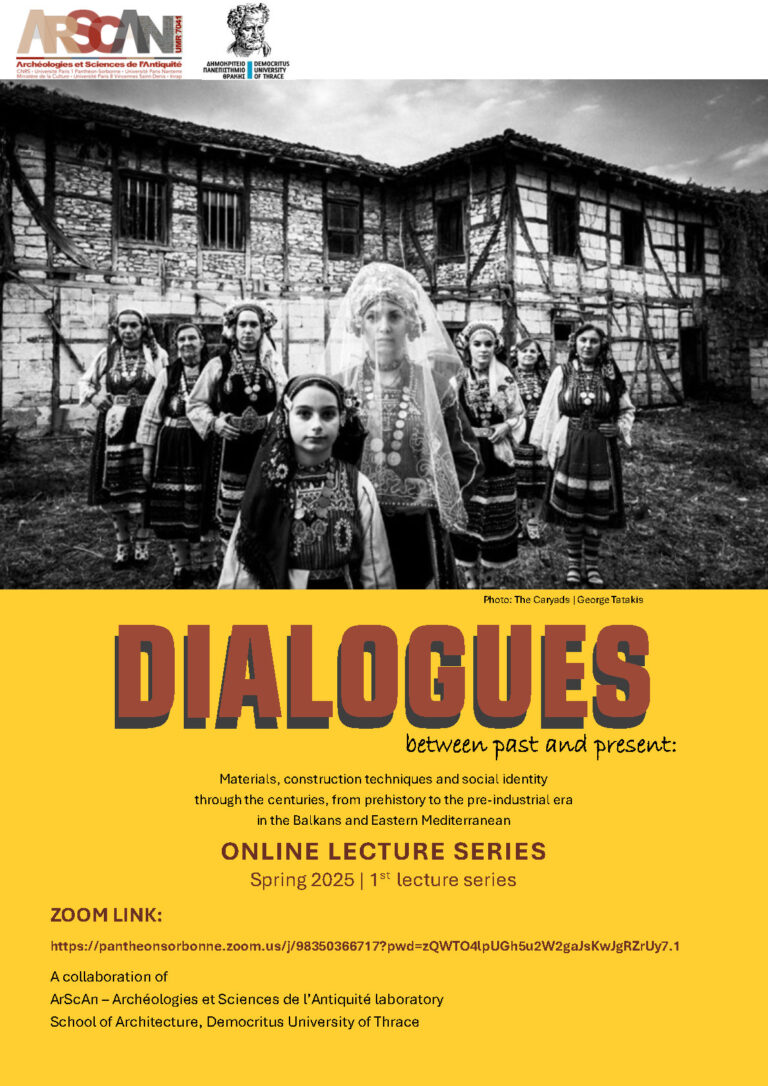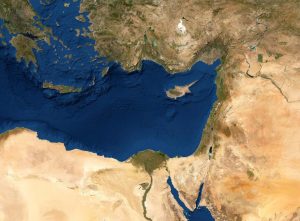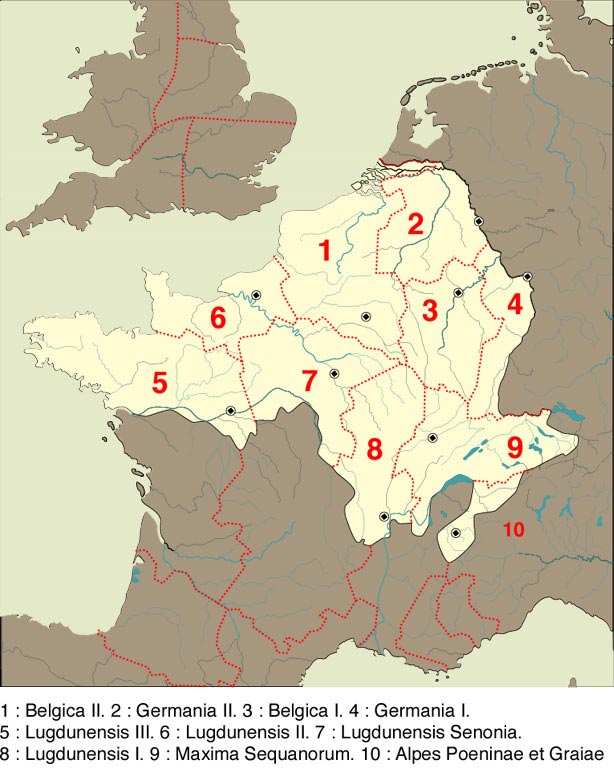Les sociétés proto-urbaines de haute Mésopotamie (5e-4e millénaires av. J.-C.)
Mission archéologique franco-syrienne de Tell Feres
Direction : Jean-Daniel Forest (†), puis Régis Vallet (ArScAn-VEPMO jusqu’en 2020)
Après cinq campagnes de fouilles (2006-2010) sous la direction de Jean-Daniel Forest (†) et Régis Vallet, le site de Tell Feres a livré des informations essentielles pour la compréhension des sociétés proto-urbaines du nord de la Syrie et la naissance de l’industrie céramique, l’urbanisation et la hiérarchisation de la société.

Tell Feres se trouve dans le bassin du Khabur, à 8 km au nord de Tell Brak, dans la zone d’agriculture sèche propice au développement des cultures sédentaires, et au cœur de la zone occupée par l’Obeid du nord et la culture du Chalcolithique récent qui lui fait suite. Le programme vient s’inscrire dans la dynamique de recherche internationale de ces dix dernières années qui a établi que la Mésopotamie du nord n’était pas le réceptacle passif d’impulsions culturelles en provenance du sud. Tell Feres est aujourd’hui, avec Tell Brak, le seul site à avoir livré une séquence continue qui nous permet d’apprécier la trajectoire évolutive de la culture locale.
Le site présentait l’avantage d’être de dimension réduite, avec une superficie de l’ordre de 4 ha et une élévation maximale de 7 m. Initialement une étroite tranchée de 5 x 25 m ouverte au sommet du flanc nord du tell en 2006, la zone dégagée a atteint 900 m2 en 2010, sur un dénivelé de 5 m, où plus de dix niveaux architecturaux successifs ont pu être définis. La fouille a livré des vestiges architecturaux exceptionnels. Au niveau 9, un bâtiment public, peut-être une salle de réunion communautaire, datant de la transition entre l’Obeid et le LC1 et mesurant environ 250 m², a pu être dégagé. Le niveau 6 a livré un plan d’habitat attestant d’une planification pré-urbaine à la fin du 5e millénaire. Enfin au niveau 2, un grand complexe domestique a été découvert. Ces vestiges datant du LC3 se déployaient sur une superficie de 425 m² et constituaient probablement une ferme devant produire pour le site de Tell Brak, alors en plein développement. Parallèlement à ces découvertes qui permettent de retracer l’histoire d’une évolution avortée vers l’urbanisme, l’analyse technologique de la céramique couplée à une étude contextuelle précise a permis de montrer la progression de la spécialisation artisanale et la naissance d’un métier à part entière, celui de potier.
Membres du programme
- Jean-Daniel Forest (†) (ArScAn-VEPMO)
- Régis Vallet (IFPO-Erbil)
- Juan Kassem (DGAM, Syrie)
- Victoria de Castéja (ArScAn-VEPMO)
- Johnny Baldi (IFPO, Beyrouth)
- Rateb Al Debs (Université de Damas)
- Frédéric Guyot (IFAO)
- Alain Gaulon
- Ali Othman (ex- DGAM, Syrie)
- Astrid Emery
Bibliographie
Baldi J. S.
- 2010 La carta d’identità di chi non conobbi mai. Note antropologiche sull’ossessione per l’identità nell’archeologia pre- e protostorica. Achab Rivista di Antropologia 15: 37-42.
- 2012 Coba bowls production, use and discard: a view from Tell Feres al Sharqi. In: Matthews R. and Curtis J. (eds.), Proceedings of the 7th International Congress on the Archaeology of the Ancient Near East 12 April – 16 April 2010, the British Museum and UCL, London. Volume 1: 355-368. Wiesbaden: Harrassowitz Verlag.
- 2012a Tell Feres al-Sharqi in LC1-2 period. Serial production and regionalisation of ceramic traditions: a perspective from a small rural site. In: Marro C. (ed.), After the Ubaid. Interpreting Change from the Caucasus to Mesopotamia at the Dawn of Urban Civilization (4500-3500 B.C.). Papers from The Post-Ubaid Horizon in the Fertile Crescent and Beyond. International Workshop held at Fosseuse 29th June-1st July 2009: 129-162. Paris: de Boccard.
- 2012b Identità tecniche e identità sociali a Tell Feres al-Sharqi tra fine Ubaid e LC2. Alcune riflessioni ceramologiche sull’apparizione del mestiere di vasaio nel nord della Mesopotamia tardo calcolitica. In: Mazzoni S. (ed.), Studi di Archeologia del Vicino Oriente: scritti degli allievi fiorentini per Paolo Emilio Pecorella: 11-38. Firenze: Firenze University Press.
- 2012 Coba bowls, serial production and social change in post-Ubais times: a view from Tell Feres al-Sharqi. In: Marro C. (ed.), After the Ubaid. Interpreting Change from the Caucasus to Mesopotamia at the Dawn of Urban Civilization (4500-3500 B.C.). Papers from The Post-Ubaid Horizon in the Fertile Crescent and Beyond. International Workshop held at Fosseuse 29th June-1st July 2009: 393-416. Paris: de Boccard.
- 2013 Anthropological reading of the ceramics and emergence of a profession: a protohistoric North-Mesopotamian view from Tell Feres al-Sharqi. In: Anguizar L.G., González M.L. and Lopes M.C. (eds.), Proceedings of the I International Congress on Ceramic Studies. Tribute to Mercedes Vegas / I Congreso Internacional sobre Estudios Cerámicos.Homenaje a Mercedes Vegas – Cadiz (Spain), 1st to 5th November 2010: 477-504. Cádiz: Universidad de Cádiz.
- 2013 What was missing on the surface. Time, chronological perturbations and some retrospective considerations on the surface exploration at tell Feres al-Sharqi (North-Eastern Syria). Akkadica 134,1: 49-75.
- 2014 Ceramic production and management of the fire between late Ubaid and LC1. The potter’s kilns of Tell Feres al-Sharqi. In: Bielinski P., Gawlikowski M. and Kolinski R. (eds.), Proceedings of the 8th International Congress on the Archaeology of the Ancient Near East, 30 Avril – 4 Mai 2012, Warsaw. Vol. 3: 187-200. Wiesbaden: Harrassowitz.
Baldi J. S. and Abu Jayyab K.
- 2012 A comparison of the ceramic assemblages from Tell Feres al-Sharqi and Hamoukar. In: Marro C. (ed.), After the Ubaid. Interpreting Change from the Caucasus to Mesopotamia at the Dawn of Urban Civilization (4500-3500 B.C.). Papers from The Post-Ubaid Horizon in the Fertile Crescent and Beyond. International Workshop held at Fosseuse 29th June-1st July 2009: 163-182. Paris: de Boccard.
Forest J.-D., Vallet R.
- 2007 Tell Feres al Sharqi 2006. Orient Express 2007 ½: 14-16.
- 2008a Tell Feres al Sharqi, un site Late Chalcolithic dans le Khabur. Paléorient 34/1: 191-198.
- 2008b Tell Feres al Sharqi 2006, rapport préliminaire sur la première campagne, Chronique Archéologique Syrienne 3: 121-129.
- 2009 Tell Feres al Sharqi 2009. Orient-Express 2009/2: 5-10.
- 2010 Tell Feres al Sharqi, un site LC 1-5 dans le bassin du Khabur (Syrie), Chronique Archéologique en Syrie 4: 147-157.
- 2011 Tell Feres al Sharqi 2009 (4e camp.). Chronique Archéologique en Syrie 5: 79-85.
- 2012 Tell Feres 2010, 5e campagne. Chronique Archéologique en Syrie 6: 59-72.
- 2014 Tell Feres al Sharqi 2006. Archiv für Orientforschung 52: 216-217 (daté 2011).
Forest J.-D., Vallet R. and Baldi J.S.
- 2012 Tell Feres al Sharqi: A 5th-4th millennium site in the Khabur drainage basin. In: Matthews R. and Curtis J. (eds.), Proceedings of the 7th International Congress on the Archaeology of the Ancient Near East 12 April – 16 April 2010, the British Museum and UCL, London. Vol. 3, Fieldwork & Recent Research: 33-50. Wiesbaden: Harrassowitz Verlag.
Forest J.-D., Vallet R., Baldi J.S. et Emery E.
- 2014 Tell Feres al Sharqi, synthèse provisoire au terme de trois campagnes (2006-2008). Annales Archéologiques Arabes Syriennes 53-54: 15-58.
Roussette P.
- 2008 Étude carpologique d’un site Chalcolithique de Syrie du nord : Tell Feres al Sharqi. Mémoire de Master 1 d’Archéologie (spécialité Archéologie et Environnement), réalisé sous la direction de M. Tengberg, Université Paris 1 Panthéon-Sorbonne.
Vallet R.
- 2014 Tell Feres al Sharki 2010: Recent Discoveries on the Ubaid and Late Chalcolithic in North Syria. In: Bielinski P., Gawlikowski M. and Kolinski R. (eds.), Proceedings of the 8th International Congress on the Archaeology of the Ancient Near East, 30 Avril – 4 Mai 2012, Warsaw: 271-287. Wiesbaden: Harrassowitz.
- sous presse Tell Feres, a failed pathway towards urbanism in Northern Mesopotamia. In: Masetti-Rouault M.-G. (ed.) Archaeology and History of Empires : Models, projects and works in progress in Northern Mesopotamia, New programs in Iraqi Kurdistan, Proceedings of the Ecole Pratique des Hautes Etudes International Congress, Paris, 14 -15 juin 2013. Turnhout: Brepols (EMMS 1).
Vallet R. and Baldi J.S.
- 2016 Tell Feres: New Evidences on the Development of Proto-Urban Societies in Northern Mesopotamia. In: Kanjou Y. and Tsuneki A. (eds), A History of Syria in One Hundred Sites: 91-97. Oxford: Archaeopress.
